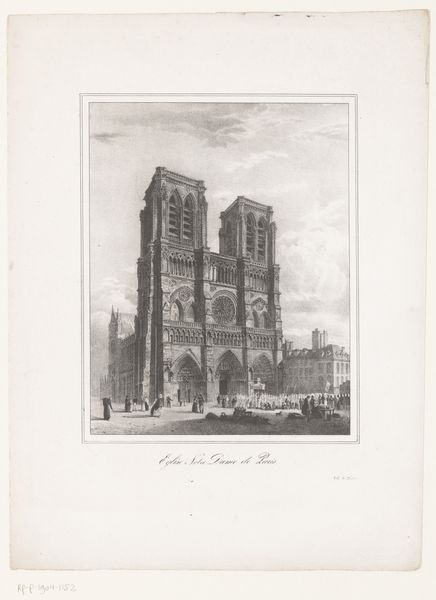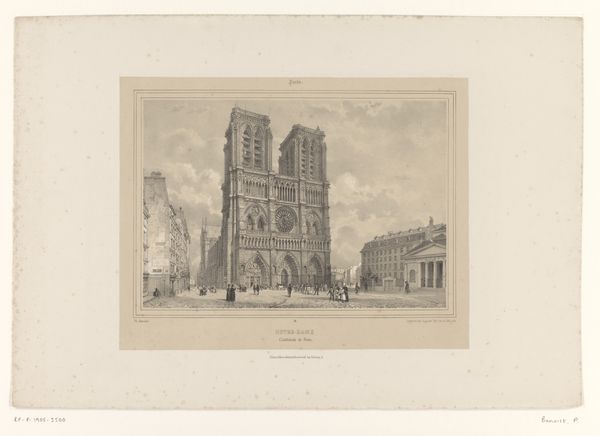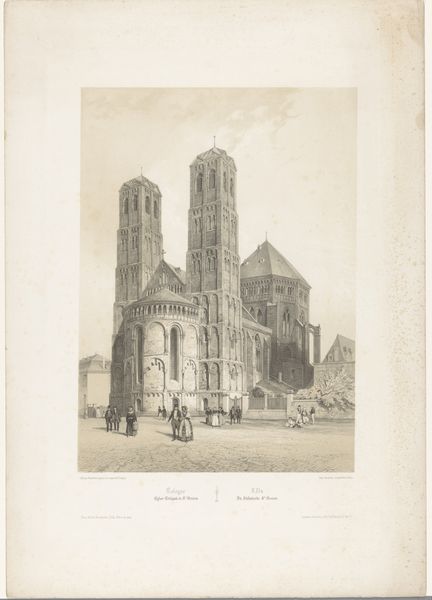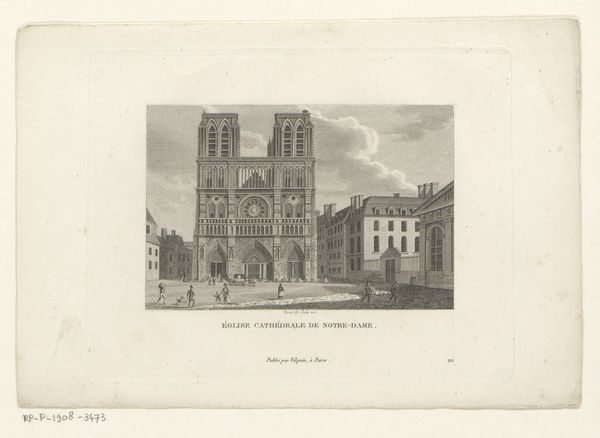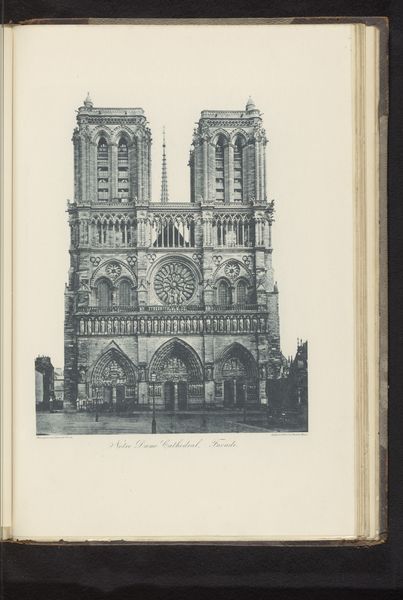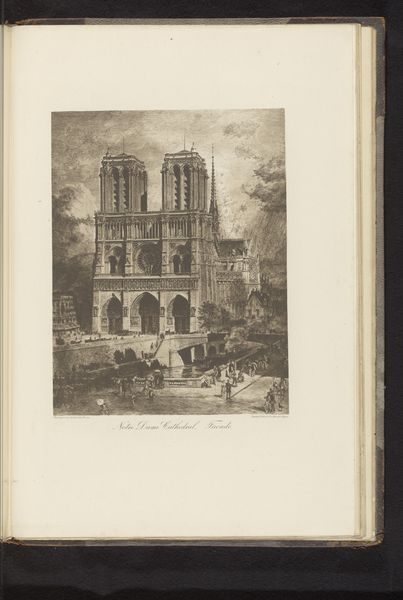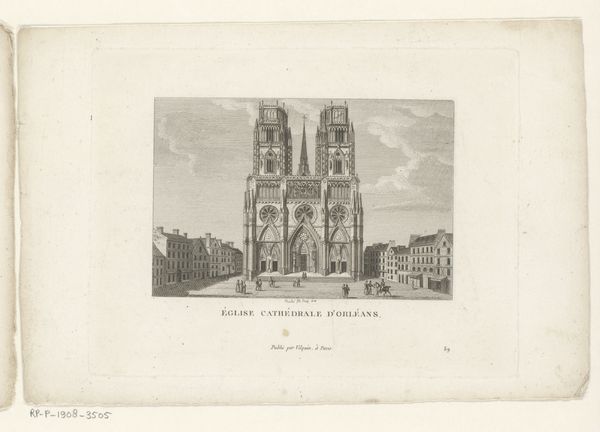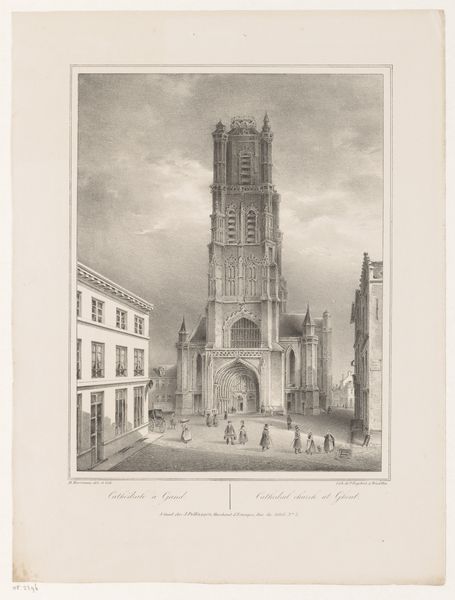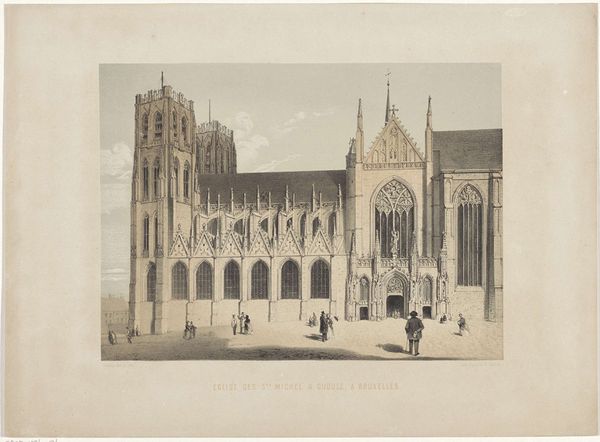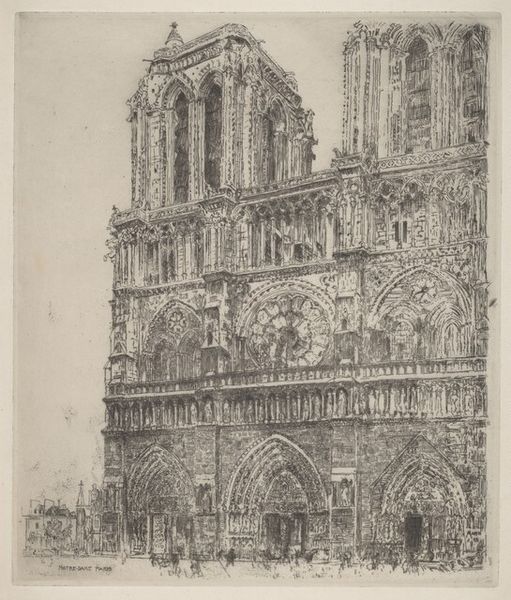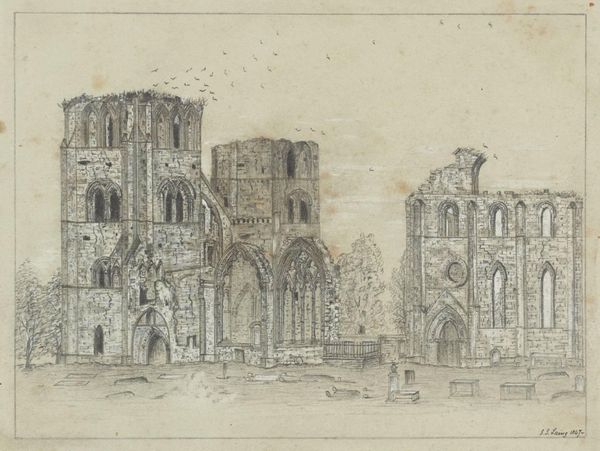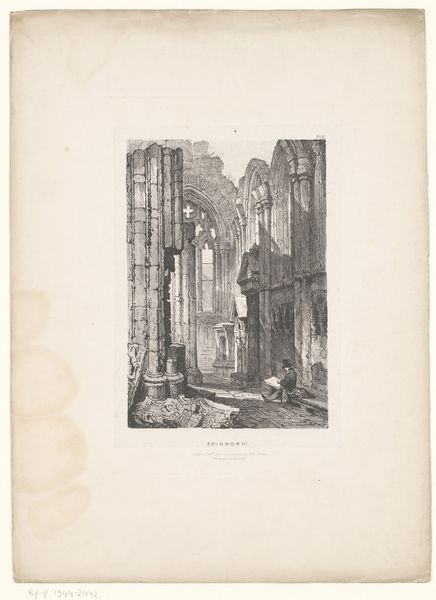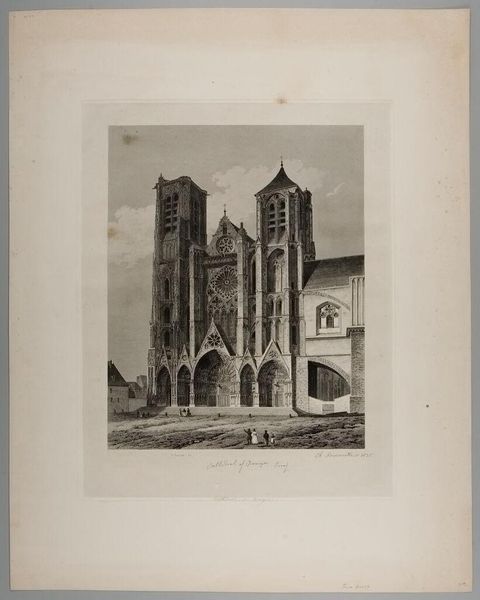
print, engraving, architecture
# print
#
romanticism
#
cityscape
#
engraving
#
architecture
Dimensions: height 245 mm, width 315 mm
Copyright: Rijks Museum: Open Domain
Curator: This print, titled "Zicht op de kathedraal Notre-Dame van Parijs," offers us a glimpse of the iconic cathedral around 1820 or 1821. It's attributed to Jean-Baptiste Arnout and crafted using engraving techniques. Editor: Striking. Even in monochrome, there's a clear emphasis on the cathedral's architectural presence; the towering facade dominates the scene, lending the work a sense of solemnity and imposing grandeur. Curator: Absolutely. The deliberate composition highlights the cathedral's role as not just a religious site, but also a significant landmark within the Parisian cityscape. Note how the surrounding structures seem dwarfed in comparison, emphasizing its cultural dominance. Editor: Precisely! This arrangement suggests a certain social order. Look at the detail: we see a gathering of individuals positioned centrally at the cathedral's entrance, presumably members of the Parisian bourgeoise, reinforcing notions of social status and civic engagement with religious institutions. The placement of figures and the distant horse-drawn carriages suggest that their inclusion is as significant as the representation of architecture. Curator: Considering Arnout’s print was created during the Romantic period, what underlying themes can be explored through this piece's visual elements? Editor: Good question. The sharp linearity and the overall sense of ordered harmony here contrasts the Romantics’ penchant for evoking emotional intensity and dramatic effect. Arnout offers us a more composed, almost restrained interpretation. Even the presence of what looks to be some heavy sky adds only mild character and feels as though it's primarily for visual support and balance for the composition. The sky’s formal, organized look also echoes Romantic landscape aesthetics while prioritizing precise, almost academic rendering. Curator: True, there are formalist tensions, but the romantic movement explored various manifestations, not always explosive ones, sometimes more subtle meditations on awe and time. It allows for Arnout to make the technical skill more of the hero rather than histrionics. Editor: An intriguing balance, ultimately making it difficult to place Arnout's print neatly within a singular artistic definition; its blend of crisp rendering and subdued atmospherics results in more of a compelling tension. Thank you, Arnout, for your dedication. Curator: Indeed. It provides a lens through which we see not just the structure, but also Parisian society’s relationship to architectural achievement during a pivotal period.
Comments
No comments
Be the first to comment and join the conversation on the ultimate creative platform.
